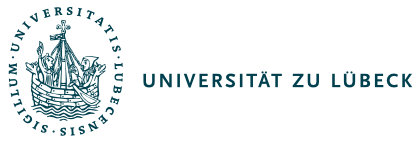Duration:
1 Semester | Turnus of offer:
each winter semester | Credit points:
6 |
Course of studies, specific field and terms: - Master Infection Biology 2023 (optional subject), life sciences, 1st semester
- Master Biophysics 2023 (compulsory), biophysics, 1st semester
- Master Molecular Life Science 2023 (compulsory), life sciences, 1st semester
|
Classes and lectures: - LS4027-V: Optical Methods (lecture, 2 SWS)
- LS4021-V: Crystallography (lecture, 2 SWS)
| Workload: - 120 Hours private studies
- 60 Hours in-classroom work
| |
Contents of teaching: | - Lecture Crystallography: Crystal growth, precipitant and phase diagram, crystal morphology, symmetry and space groups, crystallogenesis
- X-rays, X-ray sources, X-ray diffraction, Bragg's law, reciprocal lattice and Ewald-sphere construction
- X-ray diffraction by electrons, Fourier analysis and synthesis
- Protein structure determination by X-ray diffraction, crystallographic phase problem, Patterson map, molecular replacement (MR), multiple isomorphous replacement (MIR), multi-wavelength anomalous diffraction (MAD)
- Crystallography and the drug discovery process: studying protein-ligand interactions
- Practical exercises employing an X-ray generator (collection of a diffraction image) and the computer (MR; calculation and interpretation of electron density maps)
- Site visit at the Synchrotron DESY (Hamburg)
- Lecture Optical Methods: Basic principles of optics
- Light sources and detectors
- Classical light microscopy
- Photophysics, fluorescence microscopy
- Confocal microscopy
- Nonlinear microscopy
- Fluorescent dyes; GFP and genetically encoded fluorescent markers; live cell/intravital imaging: important experimental parameters
- Protein-protein interactions in living cells: FRET, FLIM; biosensors
- Photoactivatable/switchable fluorescent proteins; fluorescent timers
- Optogenetics: Cell manipulation by light
- Super-resolution 3D fluorescence microscopy: STED, PALM, STORM
- Optical tweezers as instrument for nanomanipulation
- Visualization and quantitative evaluation; data format and data storage media
- In vivo imaging in tissues and living animals
- Bioluminescence and optoacoustic imaging
- Flow cytometry & fluorescence activated cell sorting
- High-content screening; optical sensor technology
- Technologies under developmen
| |
Qualification-goals/Competencies: - Lecture Crystallography: They have a general scientific competence in macromolecular X-ray diffraction analysis
- They have the methodological competence to grow protein crystals by hanging or sitting drops
- They have the methodological competence to correctly interpret (salt or protein) the diffraction image of a crystal using the Ewald Sphere construction
- They have the methodological competence to tackle the phase problem either by MR, MIR or MAD
- They can calculate and interprete electron density maps
- They have the methodological competence, to apply structure- or fragment-based techniques for lead compound identification
- They have the communication competency to convey the principles of X-ray diffraction theory
- Lecture Optical Methods: Students acquire professional competence in basic principles and concepts of optics.
- Students know the basics of light and fluorescence microscopy.
- They know and understand the most important methods for marking and microscopic visualization of proteins and sub-cellular structures.
- Students know the possible applications of live cell microscopy, intravital imaging, and quantitative fluorescence techniques in biological questions.
- They know basic techniques of 3-dimensional optical imaging of tissues and animals.
- Student are familiar with current research topics in the field of optical methods in the life sciences and are able to evaluate them in terms of their application maturity and potential.
- Student are familiar with current research topics in the field of optical methods in the life sciences and are able to evaluate them in terms of their application maturity and potential.
- Students can classify optical methods according to their complexity and outline possible applications.
|
Grading through: |
Responsible for this module: - Dr. math. et dis. nat. Jeroen Mesters
Teachers: |
Literature: - Jan Drenth: Principles of Protein X-ray Crystallography - Science+Business Media, LLC, New York
- J. B. Pawley, ed.: Handbook of Biological Confocal Microscopy, Springer
- V. V. Tučin: Handbook of optical biomedical diagnostics, SPIE Press
- L. V. Wang, and H.-i. Wu: Biomedical optics principles and imaging, Wiley
|
Language: |
Notes:Is part of Module, too:
- LS4030-KP12 -> Prof. Hübner
- LS4021-KP06 -> Prof. Hübner
Prerequisites for the module:
- nothing
Prerequisites for admission to the written examination:
- nothing.
Module exam:
- LS4026-L1: Bioanalytics A, written exam, 120 min, 100 % module grade (Content of both lectures Crystallographie and Optical Methods)
4 exercises in Crystallographie, 2 hours each, are offered in addition to the lecture. Dates are given at the start of the semester. |
Letzte Änderung: 8.11.2024 |



















für die Ukraine